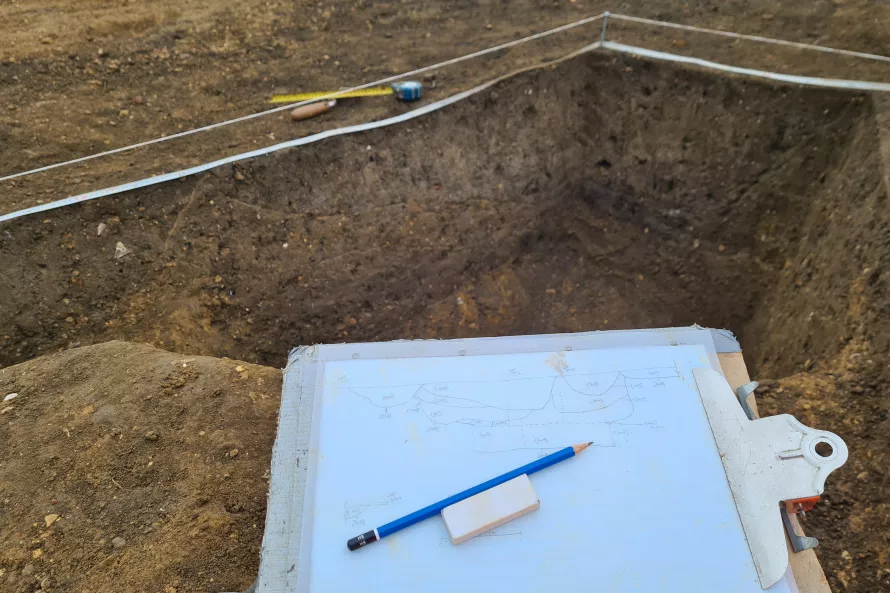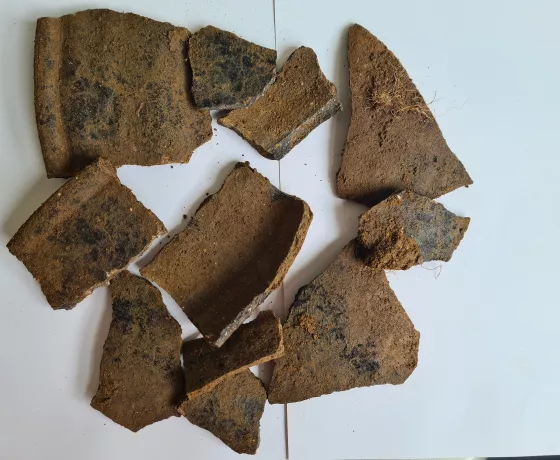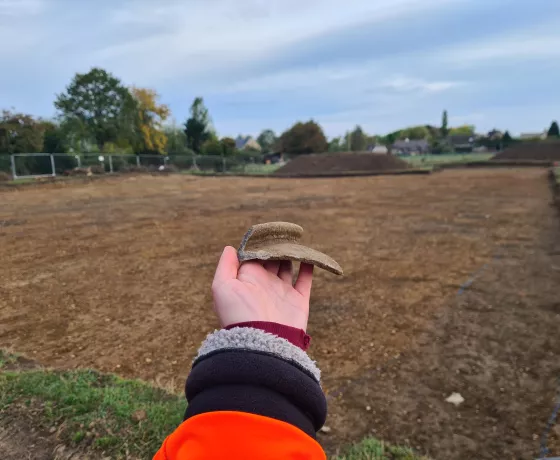As another week draws to a close, and Jack Frost began making his presence known to us, our archaeologists have continued working hard. Digging deeper daily, the narrative of this site is starting to unfold, and it is exciting!
As one digs into the ground, you develop a feel for the material you are digging through. As you dig you are already beginning to interpret what you can feel. However, seeing is believing too.
The workflow of an archaeologist, once they have dug their feature, is to then record it. This includes taking a photo of the feature and drawing it and then writing a brief interpretation of it. This is an invaluable part of the process because archaeology is a destructive process. Our written and visual record of site is all that will be left once the development is complete. But also, by taking the time to look closely at our features when drawing we can see it differently and from that change our interpretation.
In the photo above, as this slot was being dug the interpretation seemed quite simple. Drawing the section teased out a more complicated story. During the excavation process, this slot was interpretated as two ditches and two pits containing some artefacts. During the recording process, we discovered that there are multiple phases of ditches and pits intercutting each other. Combining this interpretation - of features being reused and added to - with our research on the site and historic mapping and Lidar, we begin to unravel the narrative in more detail. It appears that this slot is a small glimpse into a large earthwork remnant, quite likely a boundary for the plot of land, a marker of the edge of settlement in this part of Aston. We have yet to date it for certain, but we strongly believe that this part of site shows the extent or partial outline of an early medieval settlement plot boundary, and this larger earthwork was in use for a long period of time.
Other posts in this collection
Read our latest posts about the archaeological investigations at Aston.





